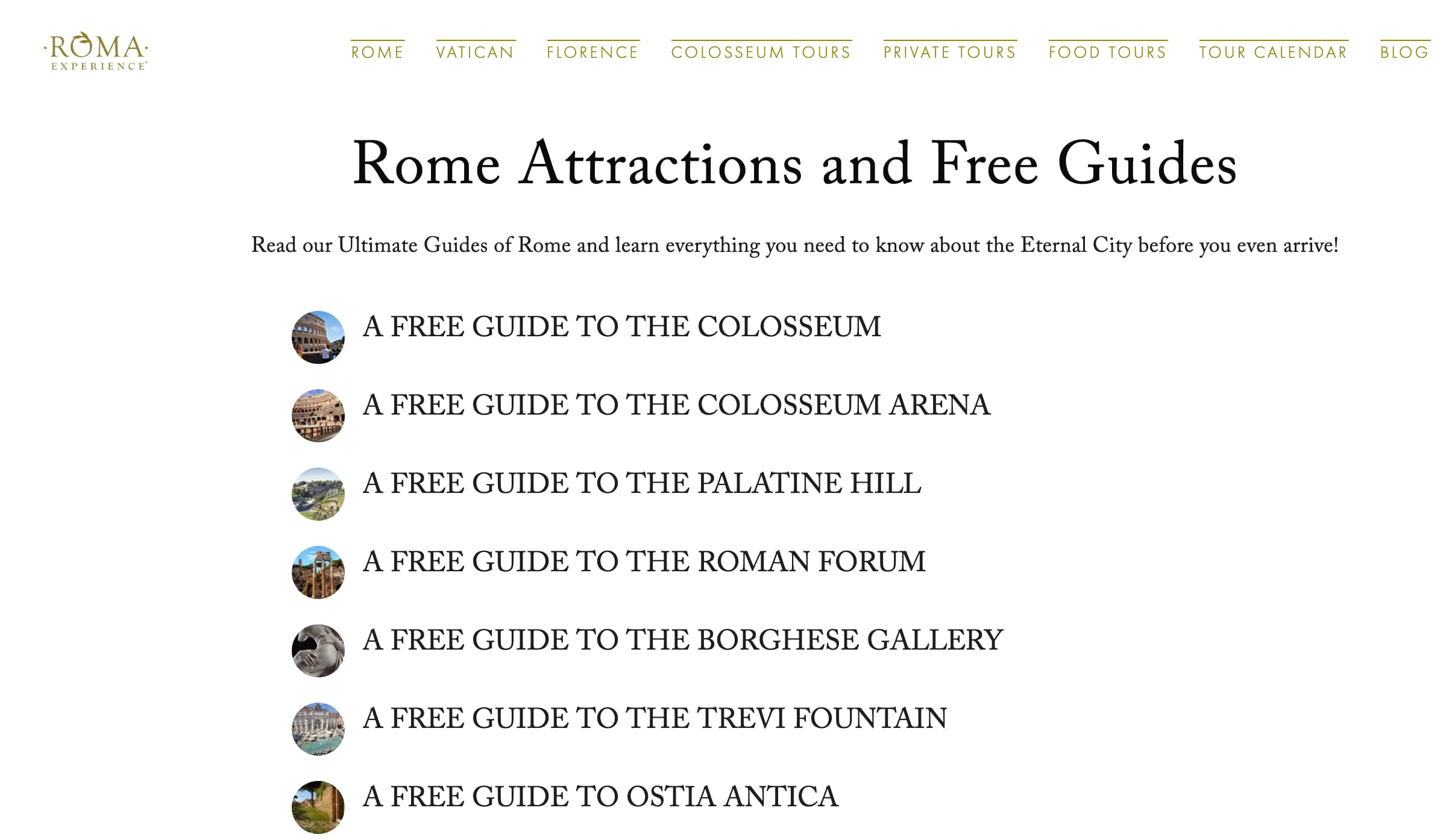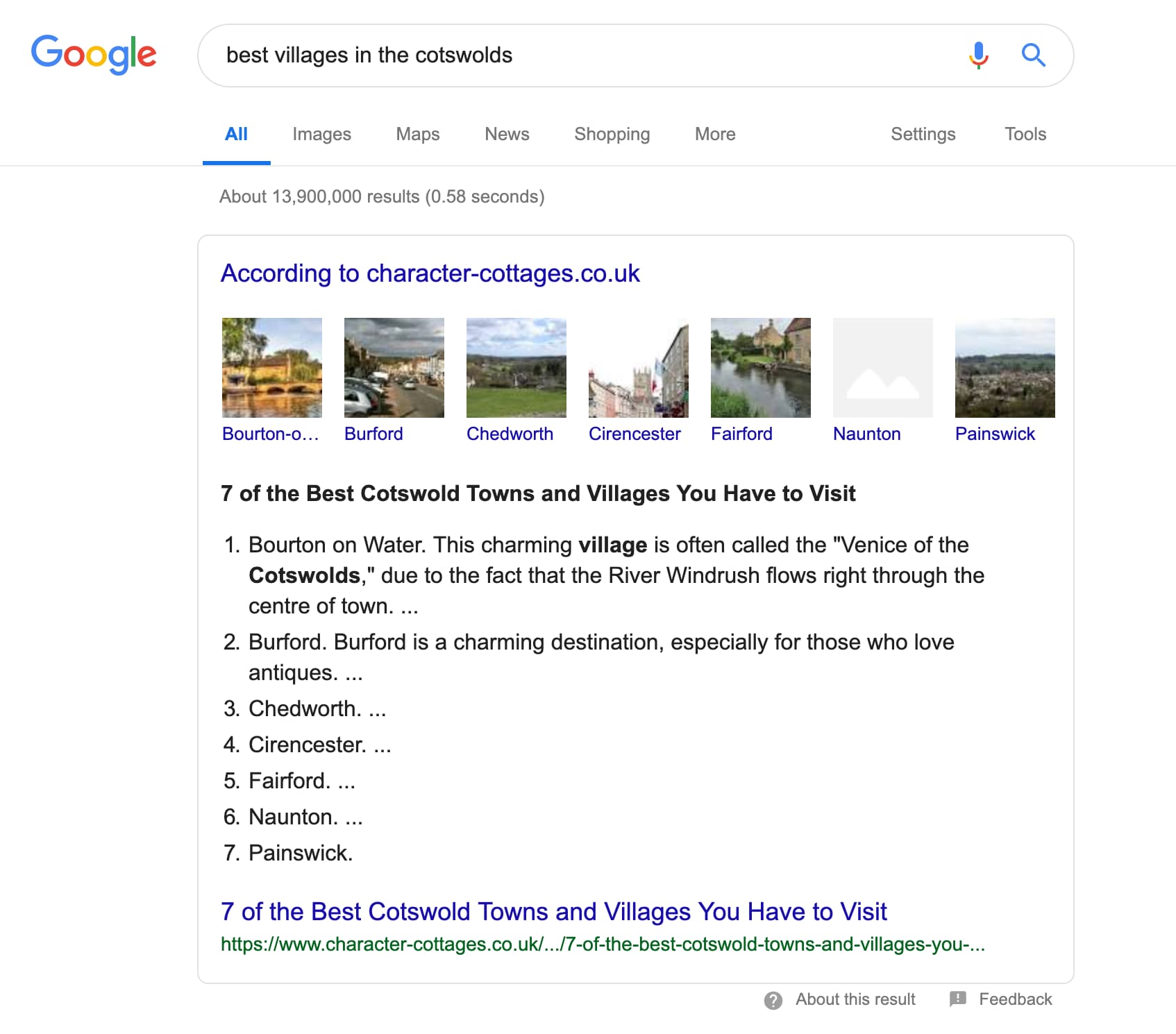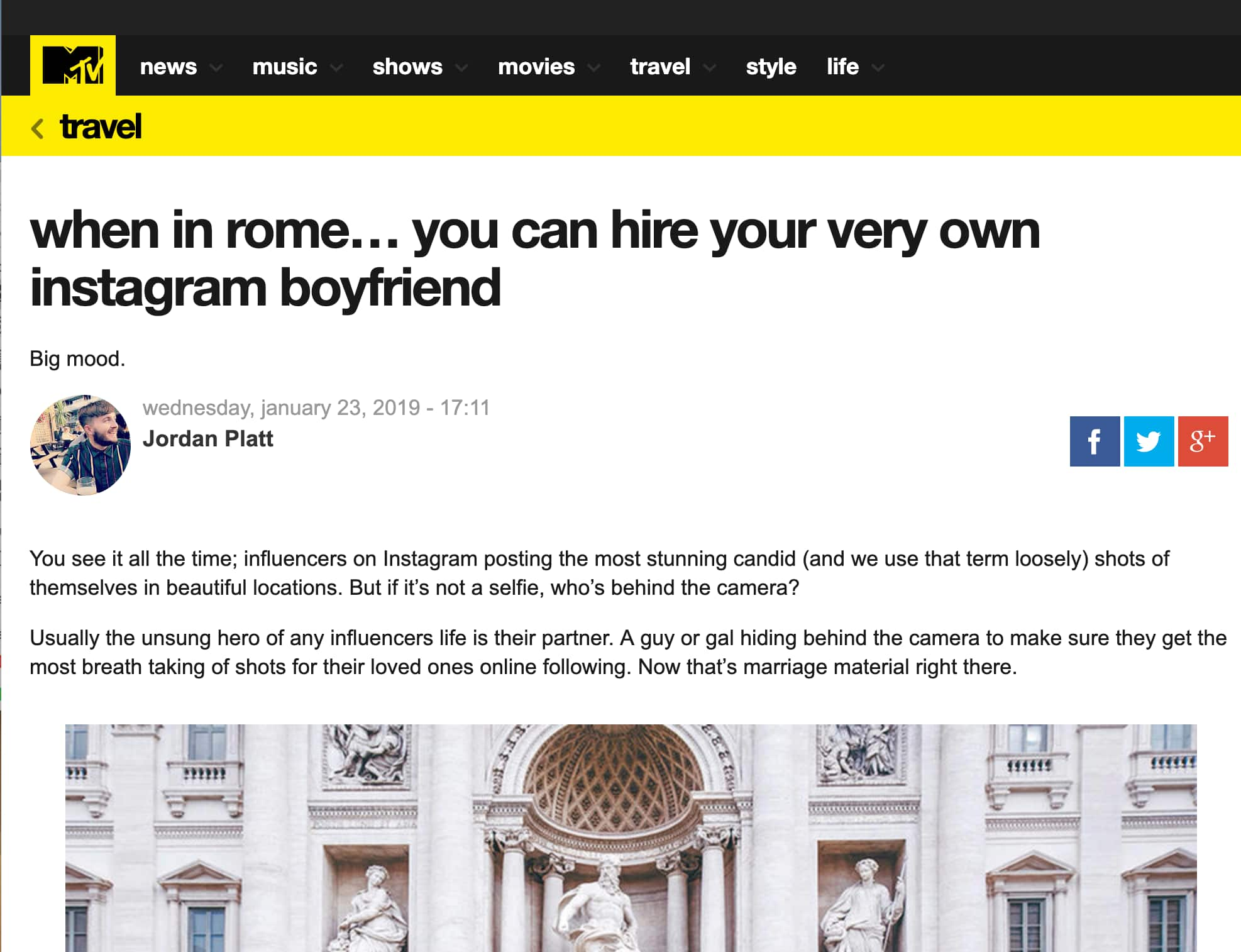18 Jun Travel SEO: How to Compete with Big Brands on a Budget via @seo_travel
Many small companies have come to the conclusion that SEO is no longer feasible in this day and age.
They believe that with Google favoring big brands and larger businesses throwing huge amounts of budget at their SEO efforts, it has become impossible to compete.
However, if you know the right places to look there is still a huge amount of opportunity to succeed in the organic search results and use it as a place to help your business flourish, even on a small budget.
We focus our work on SMEs for a number of reasons, but one of the key ones is that it allows a lot of approaches that aren’t feasible or catered to at enterprise level.
If you exploit that advantage as a small business there is lots of potential to grow your audience and your business.
This is even truer in the travel industry where there is a huge and sustained audience of people who will always want to go on holiday and travel the world.
The process they go through when booking a trip is complex and packed with different points where you can be found.
Size isn’t everything, so I’ve pulled together seven ways you can use being small to your advantage and get in a position to battle with the behemoths and come out on top.


As a smaller business, it is much easier for you to create content with specialist insight in your niche than a large company which is outsourcing their content to agencies or getting junior writers in-house to do the job.
You can also benefit from a different strategic approach. Larger companies will always focus on the high-volume phrases people are searching for and task their internal teams or agencies with ranking for those.
However, in travel, there is so much longtail traffic to be had that by creating content around the wider topical areas in your niche you can get traffic which the big brands are ignoring.
You’re no longer up against them, because they don’t even have content trying to rank for it.
This boils down to two particular actions which will bear significant fruit if you implement them.
1. Keyword Research
Where the big companies create a few top-level pages for the high-volume phrases people are searching for, you need to go deep.
Analyze the entire user journey from the moment users start researching their trip to the point they make a purchase and cover off all areas they might be searching.
This might follow a process like the one below:
- best places to visit in april
- spain holidays
- best cities in spain for families
- things to do in seville
- things to do in seville with kids
- plaza de espana
- family friendly restaurants seville
- luxury family hotels in seville city centre
There is a lot of opportunity to get found in that process without ranking for “spain holidays” and going up against the big boys.
If the rest of your website is doing its job, it could only take being found through one of them to turn a visitor into a potential customer.


However, doing good keyword research is the only way to uncover this process and identify what tangents users might be going on through their journey.
2. Better Targeted Topical Content
Once you’ve done the keyword research, you need to act on it and create world-beating content to go and rank for the topics you find.
Fortunately, as an expert in your field, you should be able to bring something new to the table that users will love. That extra insight will be rewarded if you write and structure it in the correct way.
In some instances, just creating the page will be enough in itself to rank well.
However, given the level of competitiveness in travel, you’d be better ensuring you structure the pages well to give yourself the best possible opportunity of seeing the reward.
There are too many elements that go into this to list here, but they include internal content menus, good header structure, and exhaustive depth.
Do this for the wide variety of information your audience is searching for and you’ll almost certainly drive more potential customers to your site.


The additional benefit of this is that it shows readers that you are a true expert on your topic and also really helps conversions as people trust you.
3. Barnacle SEO
So, you’re doing great things with your long-tail content and driving good traffic through that, but you still want to get found through the big, competitive terms in your niche. What do you do?
Barnacle SEO could be the answer. If your own domain doesn’t have the power to rank for the most competitive terms in the industry, you need to find editorial sites that do and will allow you to contribute in some way.
The most likely option in travel is a well-established travel blog. Find one that is relevant for your audience (luxury, backpacker, etc.) and that you can see is already ranking well for competitive terms.
Reach out to them to see if you can contribute a well-researched, in-depth article that targets the phrase you want to rank for.
Follow all the steps we’ve described in our other points above, just feature the content on their blog rather than your own site.
Ideally you’ll be able to include some prominent call to action within the piece, but even if you just get an author box at the end of the post it will provide good brand exposure and should generate some good traffic.
You then just need to monitor the search results and see how well the post ranks. If it starts driving traffic to you then fantastic! Start writing more for that site targeting other phrases!
If it doesn’t perform as well as you’d hoped, try finding another blog to test.
Remember, part of the job is down to your content being good enough to rank, so don’t just point your finger at the host site if your own work isn’t up to scratch!


4. Maximize All Technical Opportunities
Another drawback to the approach that big brands take with SEO is that they are much less likely to pay close attention to the specific search results for individual phrases.
Usually, they’ll be looking at reports with hundreds of phrases, trying to get an overview of trends rather than individual phrases and the SERPs for them.
That leaves a huge opportunity for you to get in the weeds of specific phrases and see what results Google is delivering that you can adapt to.
For example, if you search for “best villages in the cotswolds” you’ll see an answer box at the top of the page:


If you see results with an answer box then you should see that as an opportunity to exploit by creating in-depth content (as advised above) and structuring it perfectly to give you a chance of stealing the existing spot.
Another benefit of being in travel is that you can see things being successful in other niches (of which there are many) and apply it to your own.
Often this is just switching out the location, so if you have cottages in Yorkshire you might see this snippet for the Cotswolds and apply it to the same phrase but with Yorkshire instead.
Big brands are not analyzing at this level on the most part, so you can exploit that extra knowledge to your advantage.


You’ll always be playing catch up with your off-site activity as big PR and advertising budgets usually lead to lots of coverage and links on news sites and travel publications.
However, big budgets aren’t necessary to gain that kind of coverage if you get creative. By doing so you can level up your link profile so the content advantages highlighted above can really flourish.
Here are some of the ways to get links that drive your performance forward:
5. More Creative Marketing
Enterprise level companies have a lot of red tapes to work through and decisions usually go through 3, 4 or more departments before seeing the light of day.
Shareholders want to see results every time and managers don’t want to take risks.
This means creativity often gets stunted and ideas (ironically) get morphed into safe (and unsuccessful) versions of what was originally planned.
As a small, independent business the world is your oyster to try out left field ideas that have the chance of landing big.
Sometimes these might not work out, but you can pick yourself up again quickly for the next idea without having to worry about shareholder pressure.
We ran a campaign with a client based around having an Instagram boyfriend, which required them to create an entirely new tour and was outside of their usual style of tour.
However, they bought into the idea and were prepared to try out creative angles so they went ahead with the project.
The tour brought more than 300 pieces of coverage and 100 links on an array of top-tier publications in both travel and the wider media.


In one fell swoop, they leveled up their link profile with many larger competitors because they were prepared to be creative and take interesting articles that many bigger brands would not.
6. Newsjacking
Big businesses move slowly. You can react fast. Use it to your advantage.
If you monitor the news agenda you can piggyback on hot topics to gain coverage and links for your brand.
This might be throwing your hat in the ring for relevant interviews, getting content featured in Google News that drives traffic, or having an offshoot story that is relevant to the original topic.
All of these can garner links on top sites that drive your SEO performance forward as well as valuable brand awareness and new relationships with influential journalists.
7. Get Personal
Anyone who has tried link building for big brands will tell you it’s tough to get responses from people without them asking for money straight out the box.
As a third-party agency or a junior member of staff getting any different kind of reply is highly unlikely as recipients see the brand name and immediately sense the potential for cash.
However, if you’re a small business the chance of building rapport is much greater. Third parties being approached by senior members of the business (or at least being able to see who those people are) are much more likely to be open to discussing interesting approaches and ways of working together.
You also have much more scope for building long term relationships with the right people, rather than an internal team being tasked with building 100 links/month come what may.
You need to use this personal touch to your advantage and identify who the key websites and influencers are in your industry.
Once you’ve done that spend time following them and getting to know where they hang out (digitally of course!) and what they like.
Only then do you get in touch with them once you have a genuine sense of what they like and how you could work together.
Link building is one benefit that can come out of this, but it is only the start. There will be a huge amount of additional benefits if you take the time to nurture relationships with the right people.
Summary
If you’re a small travel business trying to compete in a seemingly impossible world, don’t be disheartened!
There are plenty of examples of small companies succeeding by being more clever with their marketing and using their size as an advantage.
If you follow some of the advice above I’m sure you can, too!
More Resources:
- Local SEO for Hotels: Keys to Drive Rankings, Traffic & Bookings
- Google Trips Could Disrupt Travel Business
- A Complete Guide to SEO: What You Need to Know
Image Credits
Featured Image: Created by author, May 2019
In-post Images: Created by author, May 2019
All screenshots taken by author, May 2019
Sorry, the comment form is closed at this time.